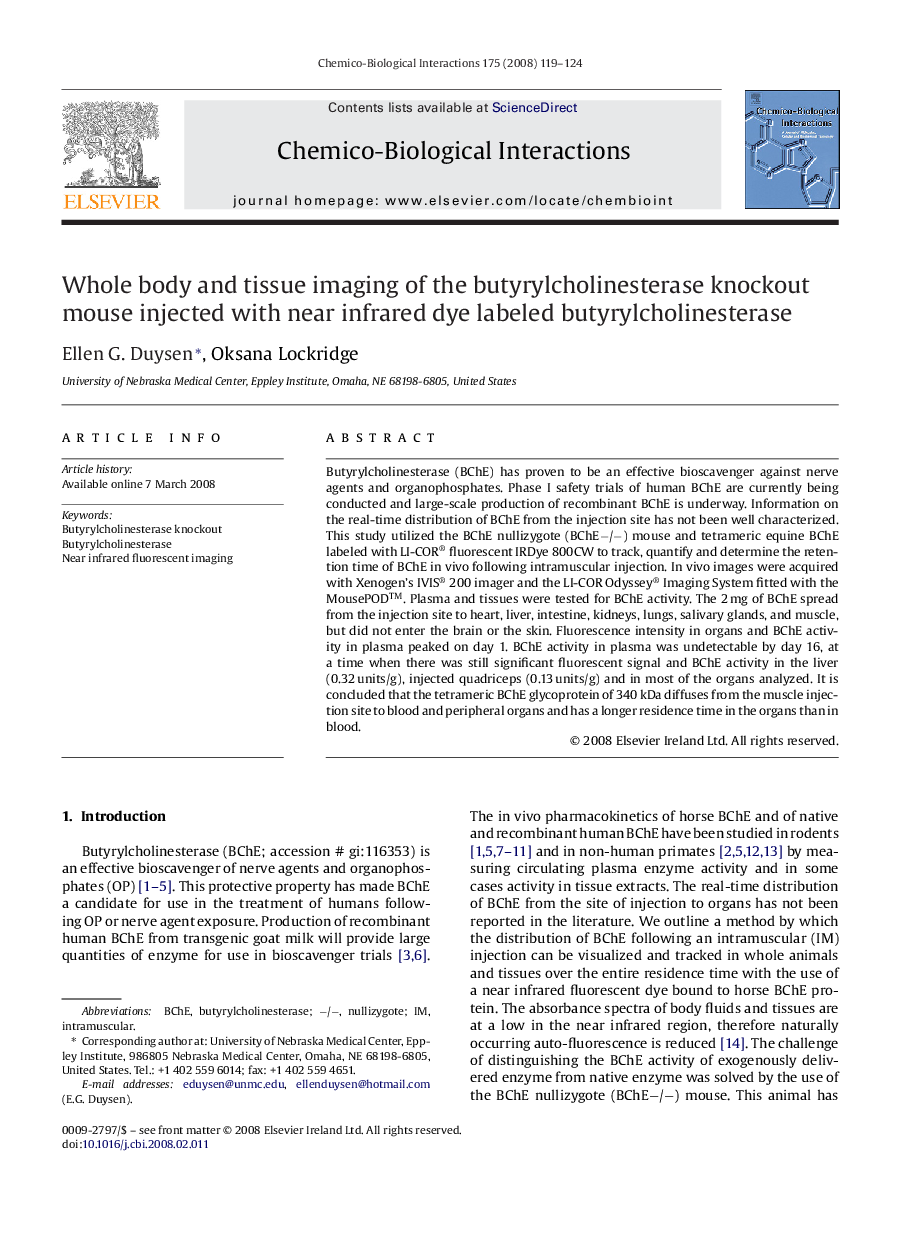| Article ID | Journal | Published Year | Pages | File Type |
|---|---|---|---|---|
| 2581569 | Chemico-Biological Interactions | 2008 | 6 Pages |
Butyrylcholinesterase (BChE) has proven to be an effective bioscavenger against nerve agents and organophosphates. Phase I safety trials of human BChE are currently being conducted and large-scale production of recombinant BChE is underway. Information on the real-time distribution of BChE from the injection site has not been well characterized. This study utilized the BChE nullizygote (BChE−/−) mouse and tetrameric equine BChE labeled with LI-COR® fluorescent IRDye 800CW to track, quantify and determine the retention time of BChE in vivo following intramuscular injection. In vivo images were acquired with Xenogen's IVIS® 200 imager and the LI-COR Odyssey® Imaging System fitted with the MousePOD™. Plasma and tissues were tested for BChE activity. The 2 mg of BChE spread from the injection site to heart, liver, intestine, kidneys, lungs, salivary glands, and muscle, but did not enter the brain or the skin. Fluorescence intensity in organs and BChE activity in plasma peaked on day 1. BChE activity in plasma was undetectable by day 16, at a time when there was still significant fluorescent signal and BChE activity in the liver (0.32 units/g), injected quadriceps (0.13 units/g) and in most of the organs analyzed. It is concluded that the tetrameric BChE glycoprotein of 340 kDa diffuses from the muscle injection site to blood and peripheral organs and has a longer residence time in the organs than in blood.
